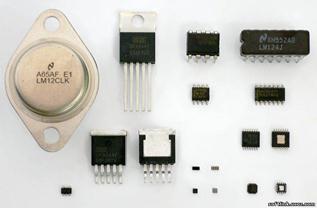Текст 8Б
Most materials can be further divided into groups. The grouping of materials is based on their properties or their origin. Here is the way to classify some materials. Woods: There are two types of wood, hardwood and softwood. Sounds simple, but the words hard and soft have nothing to do with the hardness of the wood. The difference is in the tree that the wood came from. Hardwoods come from trees that have broad leaves, for example, walnut and maple. Softwoods come from trees that have needles, such as pine and fir. Metals: There are two types of metals also, ferrous and nonferrous. Ferrous is a Latin word for iron. The difference between ferrous and nonferrous is that ferrous metals contain iron and nonferrous metals do not. Ferrous metals include iron and the many types of steel. Nonferrous metals include copper, tin, lead, aluminum, gold, and silver. Plastics: There are also two types of plastics: thermoplastic and thermoset. The difference is very simple. Thermoplastics can be melted and remelted many times using heat. Thermosetting plastics change chemically when they set (твердіти). They cannot be remelted. Acrylic plastic is an example of thermoplastic. It can be reheated many times to change its shape. Bakelite is a common plastic used for electrical plugs and cooking-pot handles. Composite materials: By combining different materials, new and often better properties can be obtained. Composite materials such as fiberglass and carbon graphite or graphite-epoxy are very lightweight and strong. They are used to make high-performance aircraft wings and lightweight sporting goods such as tennis racquets. Materials are chosen by their characteristics. The characteristics of a material are called its properties. Each material has special properties that make it useful for certain products.
Завдання 15 Зробіть доповідь на тему „Classifying materials”, використовуючи надану схему:
Завдання 16 Перекладіть англійською мовою подані нижче речення:
1 Люди використовують інформацію для того, щоб виробляти, створювати та продавати продукцію. 2 Натуральні копалини, такі як залізо та мідь, видобуваються з надр землі. 3 Джерела енергії включають сонячну, геотермальну та ядерну енергію. 4 Існують компанії, які збирають, обробляють та продають інформацію. 5 Ми завжди забуваємо, що ми живемо в світі, який не можна вважати невичерпним. 6 Існує два типи пластику: термопластичні та термореактивні матеріали. 7 Важливо не тільки те, чи буде ваша продукція такою, як ви її собі уявляєте, але й те, з якого матеріалу вона буде вироблена. 8 Матеріали поділяються на групи, базуючись на їх властивостях та походженні. 9 Тверду деревину виробляють з дерев, які мають широке листя, наприклад, горіх чи клен. 10 Різниця між кольоровими та некольоровими металами полягає в тому, що кольорові метали містять залізо, а некольорові ні. 11 Матеріали вибираються завдяки їхнім характеристикам.
УРОК 9 Завдання 1 Уважно прочитайте подані нижче слова та їх переклад. Запам’ятайте їх:
Завдання 2 Прочитайте та перекладіть подані нижче слова, ґрунтуючись на їх подібності до слів рідної мови: adhesive, patent, innovation, license, to protect, file, sketch, prototype, model, project, tradition. Завдання 3 Прочитайте подані нижче словосполучення. Дайте їх еквіваленти рідною мовою: creative thinking, by accident=by chance, a nonstick surface, safety glass, a car windshield, corn flakes, something else, to work toward a goal, exercise equipment, waste products, nuclear waste products, to crank the engine, patent office, water faucet, door knobs, current needs.
Завдання 4 Використовуючи значення відомих вам слів та правил словотворення, перекладіть подані нижче групи слів. Визначте, до якої частини мови належить кожне слово (зверніть увагу на те, що іноді різні частини мови збігаються за формою):
accident – accidentally approach – to approach safe – a safe – safely – safety valuable – value – to value – evaluation – to evaluate combination – to combine new – innovation - innovator benefit – to benefit (from) to notice – unnoticed – a notice- noticeable rust – to rust – rusting permission – to permit patent – to patent high – height wide – width long – length to weigh - weight
Завдання 5 а) Уважно вивчіть таблицю різних типів умовних речень, їх утворення та значення.
|





